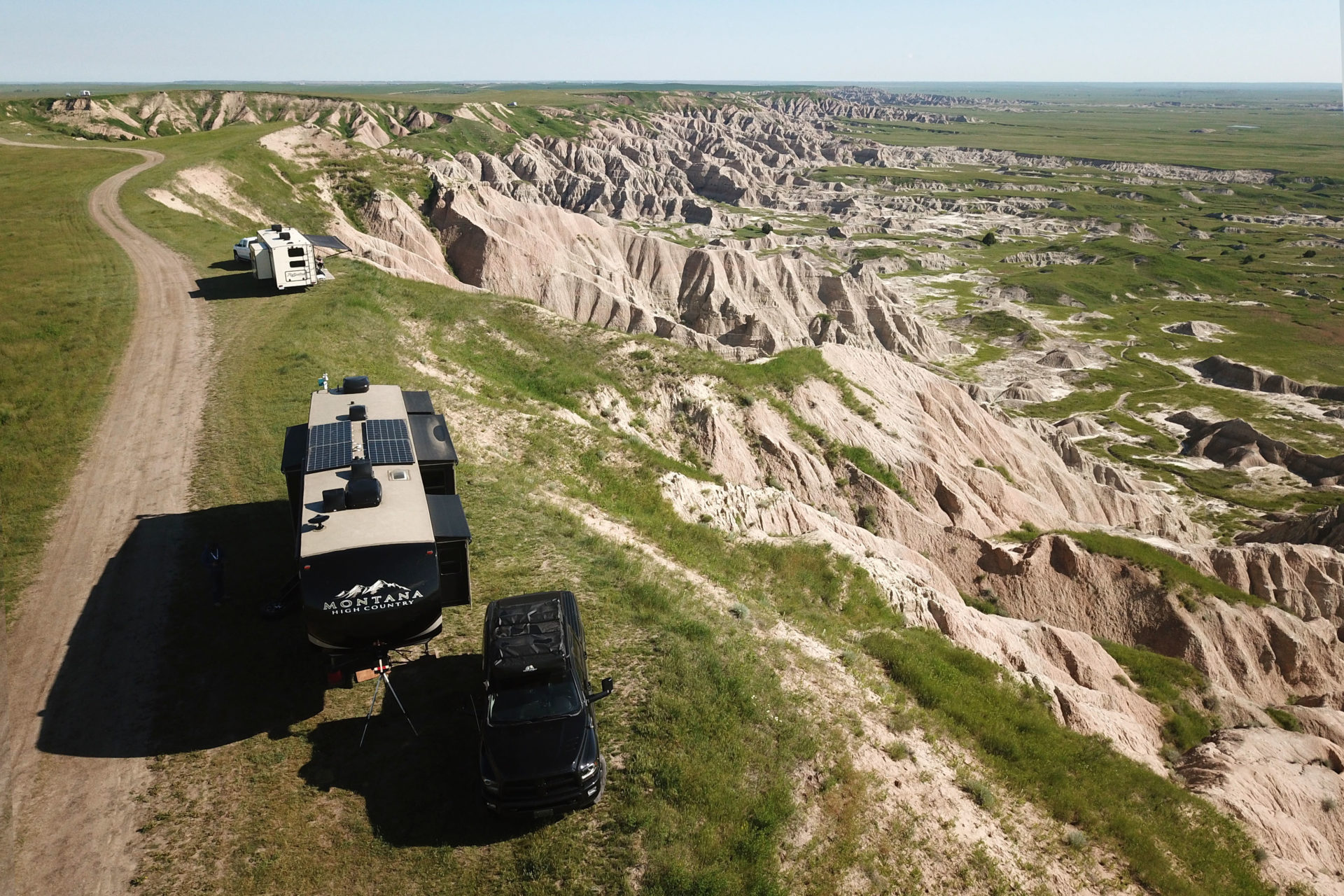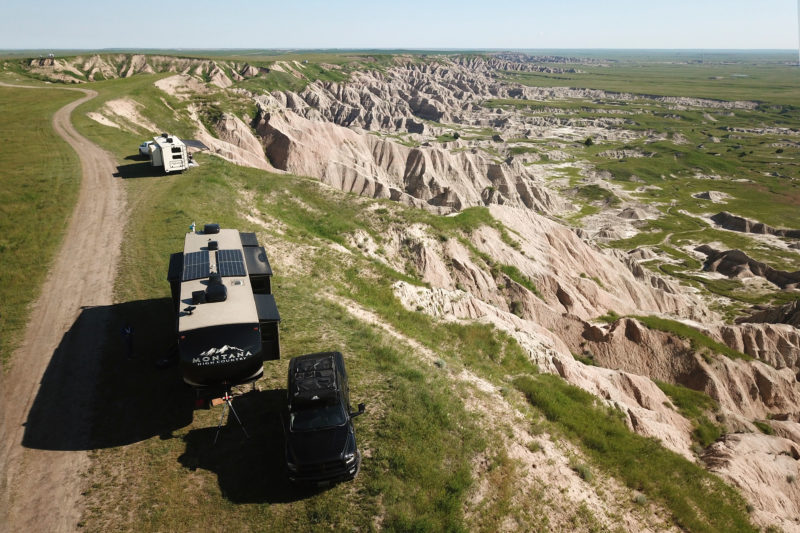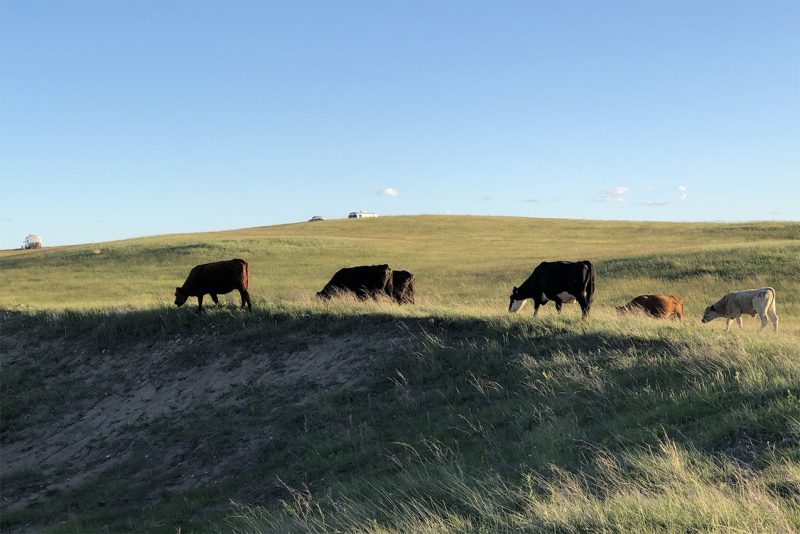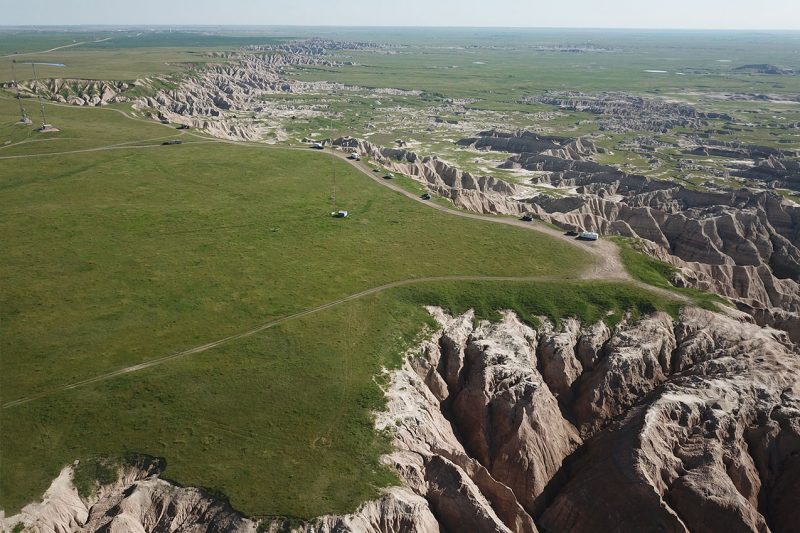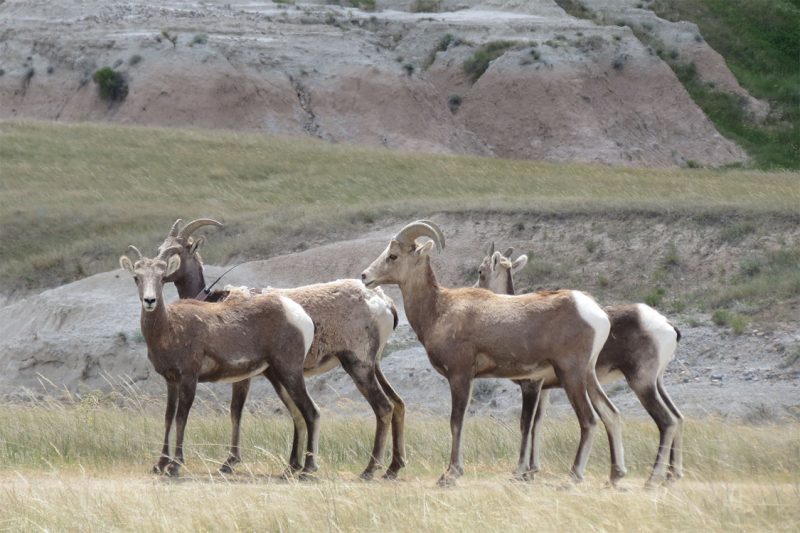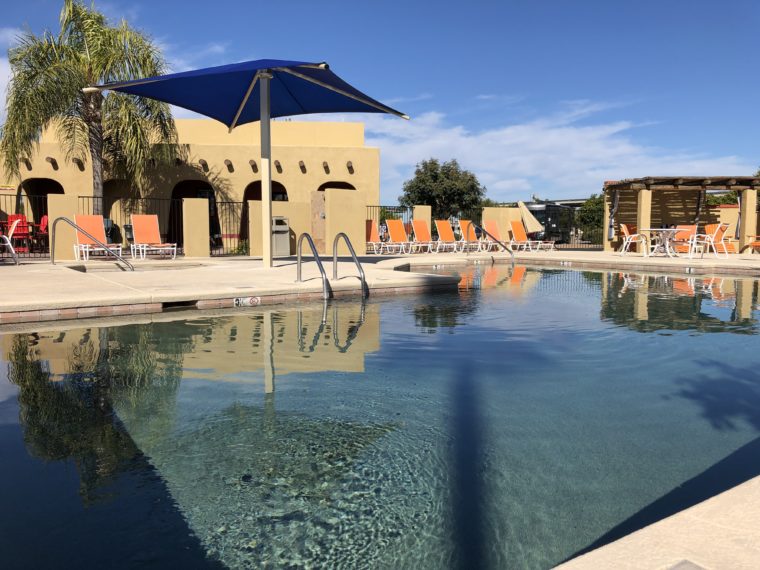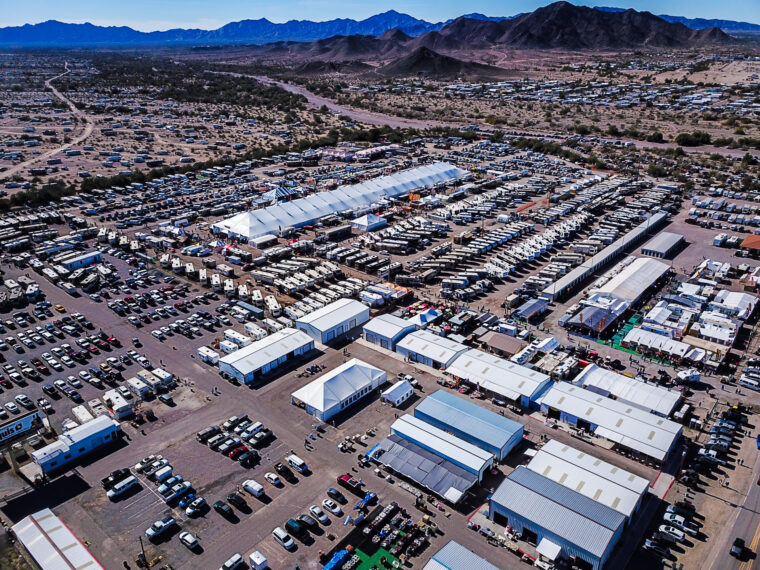While it may not draw visitors like Grand Tetons, Yellowstone, or even Rocky Mountain National Park, Buffalo Gap National Grassland has an allure of its own. Located in southwest South Dakota and nudged up against Badlands National Park, the protected area combines rolling green prairie land and rocky badlands, plus plenty of free dispersed camping.
The area is split into two different sections covering close to 1,000 square miles and falls under the Nebraska National Forest territory.
“We’re different than a lot of National Forests because we’re a grassland. So for one thing we don’t have very many trees,” says Buffalo Gap District Ranger Alex Grant on what makes the area so unique. Grant says the Buffalo Gap National Grassland is popular for dispersed camping, hunting, and rockhounding, which are essentially amateur geologists looking for unique gems and other rocks.
One of the best views can be found at Nomad View, a dispersed camping area popular with visitors for its staggering drop from green grass to rocky earth below, which is known as The Wall. The spot has a five-star rating on Campendium with more than 130 reviews and the community-submitted pictures give a hint of why.
“You have the ability to come right up to the edge of the wall and get a spectacular view of the area,” said Grant. “I think that’s what attracts people the most. I also think the proximity to other areas. You’re right there near Badlands and you’re right there near the Wall and not far from Rapid City.”
Multiple Campendium users rave about the site saying things like, “Yes, there was wind. Yes, the road is not great. BUT you cannot beat the price or the view,” and “Absolutely loved camping here. Absolutely spectacular views. Very quiet. Millions of stars.”
Unfortunately, with the spot’s popularity has come some new issues, but most of them can be fixed with a little research and care from visitors.
Grant says when he first arrived at the job a big problem involved something as simple as leaving a gate open. Basically, the Grasslands is home to a number of grazing cattle owned by nearby livestock ranchers. When people entered the area to camp, they would have to open and shut a gate, but that didn’t always happen and cows would escape.
“We were getting livestock out in the middle of the highway where people are driving into Badlands,” said Grant. “So we had to do an emergency closure for safety precautions.”
Grant says the closure was only temporary and was overall well received by visitors. Grasslands officials came up with a simple solution and added a cattle guard to the gates which is essentially a row of metal bars that cows cannot cross but they don’t stop people or vehicles from coming and going.
Now, most of Grant’s team’s focus has turned to people driving over the grassland and creating their own roads. The area uses what’s called a motor vehicle use map to highlight the areas vehicles can use to get around, but unfortunately, with so much open land people sometimes ignore the map, causing resource damage or getting lost. In some cases, people will follow the double track left behind by another vehicle that illegally drove across the land, further impacting it. Officials have tried to add signs and other markers, but unfortunately, the fix is not as simple as the gate, especially with the uniqueness of protected grasslands.
“When you go to forest land they have natural barriers and they can drop trees or other barriers, and you can’t drive around that. But for us, if I put up a post in the middle of two-track they’re just going to drive around it,” said Grant. “Some people don’t view it as an indicator to stop, so what we try to do is put a sign up and that’s there because we want people to read them and then abide by them.”
The confusion doesn’t end with where to drive, as Grant says another problem they see is people camping on private property. Visitors sometimes are unaware they left the federal land boundaries and now are on private land.
Rangers hope people will be more vigilant to read signs and allow the grass to regrow in areas where it was damaged. However, the driving issues do not end there. Officials with Buffalo Gap National Grassland have stayed busy working to strengthen the roads designed for cars, especially when it comes to rain and how quickly vehicles can get trapped due to mud.
“People need to pay attention to the conditions out there. We have what’s locally called ‘gumbo,’” said Grant. “The ground becomes very sticky and very slippery, and it’s very easy to get stuck.”
When storms pop up, the dry ground can trap cars and trucks and Grant says the price tag to pull someone out is fairly expensive. To help alleviate the problem, officials have begun adding some gravel to popular access points and so far that has helped.
The final issue visitors to Buffalo Gap can help fix is trash left behind. Between popular dispersed camping sites like Nomad View and holidays like the 4th of July, oftentimes there can be a truckload of garbage left behind. As with any natural area, the best solution for this is to follow Leave No Trace ethics and pack out whatever you brought into the site.
Grant knows most people who visit want what’s best for Buffalo Gap and says these simple steps can be followed to help keep all areas open for generations. He says he implores anyone with questions about visiting to stop by the Ranger Station, “Most people do follow the rules, but obviously there are some that don’t. The biggest thing is following our maps or following our signs.”
